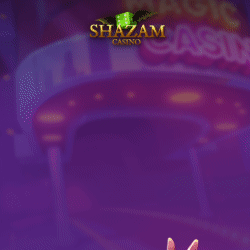ADVANCED BLACKJACK RULES
basic rules of real money blackjack but there’s a few more yet to come.
In this section…
we’ll look at several advanced rule variations. These might not be of concern to beginning players but as you advance in blackjack expertise they’ll be important to know.
:
every rule variation either hurts or helps your ‘breakeven percentage’ in the long run. The better you understand all of the rules you might encounter the more likely you are to be profitable at the blackjack table.
Top 4 Blackjack Casinos
Top United States Casinos
LAND BASED CASINOS VS. ONLINE CASINOS
Many of the procedural guidelines we talked about earlier were of minimal interest to those who primarily play online.
The rules are a different matter…
no matter where you play blackjack it is essential to understand the rules of the game. Once you do, you can ‘shop around’ to find the most ‘player friendly’ blackjack game in a land-based casino or online. Every rule variation might seem minuscule but they all impact the house ‘edge’ in the long-term. You’ll have a hard time finding any casino that gives you the best of it but it’s essential to avoid those that offer rules that are all but guaranteed to make you a long-term loser.
DOUBLE AND RE-SPLIT RULES
We talked about splitting and doubling in an earlier section but you may have wondered what happens after you split a hand?
What if you are dealt pairs on one of your split hands?
Can you split again?
Say you’re dealt the following hand:
8-8
You split them and end up with these hands:
8-K 8-8
Obviously, you want to stand on the 8-K since you have 18. But what about the 8-8?
At most casinos you can resplit that hand which would give you:
8-K 8-x 8-x
In general, you can re-split a hand up to four times. You’ll sometimes encounter casinos that limit re-splitting hands to two or three.
If you’re at a casino that doesn’t allow re-splitting at all you should go somewhere else!
Not being able to re-split your hand gives the casino a -0.10% edge. This might not seem like much but as we’ll discuss at length when we start talking about strategy every incremental edge or disadvantage adds up and is very significant.
Splitting to only two hands is roughly the same statistical disadvantage as no re-splitting (-0.10%) while limiting a player to three resplits is less disadvantageous (-0.01%).
Splitting Aces are a Special Case
Even the best casinos will deal only one card on each split ace. Every other split card is treated like a separate hand which a player can hit, stand, etc.
Why would a casino not allow a player to draw to split aces?
Take a guess…
…think the fact that redrawing to split aces gives the player a +0.19% edge might have something to do with it?
Here’s a special circumstance worth discussing.
What if you’re dealt:
A-A
Which you split and get the following on the redeal:
A-J A-A
What happens then? First of all, the A-J is just treated as ’21’ not as a ‘natural’ or blackjack. So you’re not going to get paid 3-2 for it.
As far as the new pair of aces—it depends on the casino. Some casinos will let you re-split aces while some will not.
The ability to re-split aces is obviously to the player’s advantage and results in an additional +0.08% edge.
You can also double after splitting at some casinos but not at others.
For example, let’s say you’re dealt:
7-7
Which you split and hit:
7-K 7-4
Some casinos will let you ‘double down’ on the split 11. If they don’t, it creates a -0.14% disadvantage for the player.
DEALER HITS SOFT 17
We’ve saved this rule for the ‘advanced’ section, primarily because it’s easier to understand it’s significance once you’re familiar with the basics of the game. That being said, this is something that all players should be aware of when selecting a blackjack game.
The general rule of blackjack is that when the dealer plays his hand that he’ll draw on 16 or below and stand on 17 or higher.
If this is the case, you’ll see something like this on the blackjack table felt:
“DEALER MUST DRAW TO 16 AND STAND ON ALL 17’S”
That’s changed in the past couple of decades and more and more casinos have made it more difficult on the player. The way this has been done is to make a distinction between ‘hard’ and ‘soft’ 17 hands. A ‘soft’ hand simply means a hand that includes an ace.
A ‘soft 17’ is a 17 hand that includes an ace like this:
6-A
To give the house an additional edge overall (too often clueless to the public)…
…some blackjack games now stipulate that the dealer must stand on all hard 17’s and hit all soft 17’s. Other than short paying blackjacks (another ‘screw the player’ rule that’s all too common now) hitting on soft 17 is the most player disadvantageous rule you’ll find at the blackjack table.
It gives the house an additional -0.22% advantage and they’re already getting the best of it in just about every other way.
At one point in history…
… you wouldn’t see ‘hit on soft 17’ rules outside of the most ‘touristy’ casinos in Northern Nevada. Now it is widespread.
You’ll know you’re at this kind of table when you see the following rule on the table felt:
“DEALER MUST STAND ON HARD 17 AND DRAW TO SOFT 17”
Take the time to find a game in which the dealer stands on all 17’s. In some cases, you’ll find both rule variants in the same casino so look around!
See Also:
- /blackjack/using-advanced-blackjack-strategy/
- /blackjack/focus-is-the-blackjack-players-secret-weapon/
- /blackjack/intermediate-blackjack-rules/


















